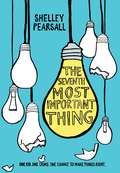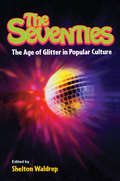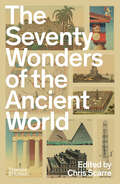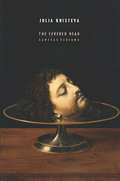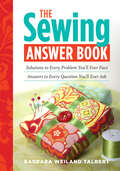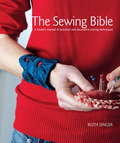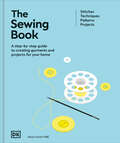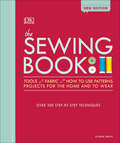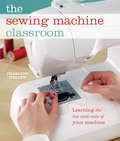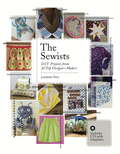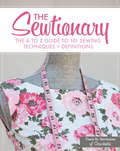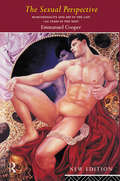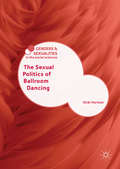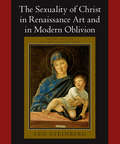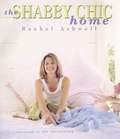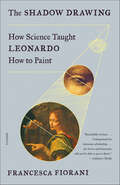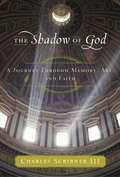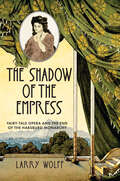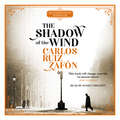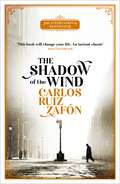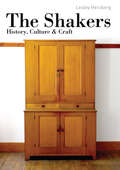- Table View
- List View
The Seventh Most Important Thing
by Shelley PearsallShelley Pearsall's story of anger and art, loss and redemption, is a transformative read that will appeal to fans of Lisa Graff's Lost in the Sun and Vince Vawter's Paperboy.One kid. One crime. One chance to make things right.It was a bitterly cold day when Arthur T. Owens grabbed a brick and hurled it at the trash picker. Arthur had his reasons, and the brick hit the Junk Man in the arm, not the head. But none of that matters to the judge--he is ready to send Arthur to juvie for the foreseeable future. Amazingly, it's the Junk Man himself who offers an alternative: 120 hours of community service . . . working for him. Arthur is given a rickety shopping cart and a list of the Seven Most Important Things: glass bottles, foil, cardboard, pieces of wood, lightbulbs, coffee cans, and mirrors. He can't believe it--is he really supposed to rummage through people's trash? But it isn't long before Arthur realizes there's more to the Junk Man than meets the eye, and the "trash" he's collecting is being transformed into something more precious than anyone could imagine. . . . Inspired by the work of American folk artist James Hampton, award-winning author Shelley Pearsall has crafted an affecting and redemptive novel about discovering what shines within us all, even when life seems full of darkness.From the Hardcover edition.
The Seventies: The Age of Glitter in Popular Culture
by Shelton WaldrepThe Seventies is must reading for anyone who wants to revisit that glam decade and the contributions it made to our culture. The contributors take you on a fascinating journey that looks at the Black Panthers, Jonestown, glam rock, black action films and gay male subcultures as well as including queer rereadings of cultural phenomena, examinations of clothing and seventies bodies, and an essay on the meaning of sound in the seventies.
The Seventy Wonders of the Ancient World: The Great Monuments And How They Were Built
by Chris ScarreExpands on the traditional "Seven Wonders" to examine an impressive number of ancient marvels from around the globe. How were the ancient wonders of the world built? How many people did it take to build the Great Wall of China or the Sphinx at Giza? The Seventy Wonders of the Ancient World answers these and many more questions, examining antiquity's most spectacular feats of engineering and celebrating the achievements of the builders who worked without the aid of modern technology. Expanding upon the theme of the traditional Seven Wonders, The Seventy Wonders of the Ancient World incorporates marvels from around the globe, spanning the centuries from the first stone monuments of the fifth millennium BCE to the Great Temple of the Aztecs in the sixteenth century CE. Lesser-known monuments as well as famous sites are explored in detail, such as the giant stelae of Aksum and the mountain palace at Sigiriya. The raising of the stones at Stonehenge, the laying out of the Nazca Lines on the face of the Peruvian desert are all described and explained by an international team of experts. Packed with fact files, this is a testament to the skill of the ancient architects and engineers who continue to impress successive generations down the ages. Recently updated and in a new accessible paperback format.
The Severed Head: Capital Visions (European Perspectives: A Series in Social Thought and Cultural Criticism)
by Julia KristevaInformed by a provocative exhibition at the Louvre curated by the author, The Severed Head unpacks artistic representations of severed heads from the Paleolithic period to the present. Surveying paintings, sculptures, and drawings, Julia Kristeva turns her famed critical eye to a study of the head as symbol and metaphor, as religious object and physical fact, further developing a critical theme in her work--the power of horror--and the potential for the face to provide an experience of the sacred.Kristeva considers the head as icon, artifact, and locus of thought, seeking a keener understanding of the violence and desire that drives us to sever, and in some cases keep, such a potent object. Her study stretches all the way back to 6,000 B.C.E., with humans' early decoration and worship of skulls, and follows with the Medusa myth; the mandylion of Laon (a holy relic in which the face of a saint appears on a piece of cloth); the biblical story of John the Baptist and his counterpart, Salome; tales of the guillotine; modern murder mysteries; and even the rhetoric surrounding the fight for and against capital punishment. Kristeva interprets these "capital visions" through the lens of psychoanalysis, drawing infinite connections between their manifestation and sacred experience and very much affirming the possibility of the sacred, even in an era of "faceless" interaction.
The Sewing Answer Book: Solutions to Every Problem You’ll Ever Face; Answers to Every Question You’ll Ever Ask
by Barbara Weiland TalbertThis informative and encouraging guide offers proven solutions to all of your most stubborn sewing problems. With a question-and-answer format that makes it easy to find what you need, Barbara Weiland Talbert includes tips on selecting the perfect patterns, choosing the right size needles, comparing seam types, and much more. No matter your sewing experience or whether you prefer to use a machine or sew by hand, The Sewing Answer Book will help you hone your skills while inspiring you to try new and exciting techniques.
The Sewing Bible
by Ruth SingerA complete course on sewing--from threading a needle to couture hemmingFinally someone has created every sewer's ideal companion: a comprehensive book on every aspect of hand and machine sewing--from the most basic to the most advanced--with a modern aesthetic and 20 projects to boot. From simple tutorials to in-depth masterclasses, Ruth Singer packs in lesson after lesson on both practical and decorative techniques.The Sewing Bible includes:* Easy-to-use instructions accompanied by hundreds of beautiful photographs detailing every stage of each technique*20 functional, fashionable sewing projects that illustrate many of the lessons--from an easy T-shirt transformation to a complex handbag--making this a how-to guide and pattern book in one*Extensive guides to fabrics and tools, and resources to help you choose the perfect materials and equipment for your projects*Advice on using organic and eco fabrics and working with recycled and vintage fabrics With more excitement than traditional sewing manuals, and much more depth than a book of projects, The Sewing Bible is an easy-to-use guide that's as attractive as it is comprehensive. This is the one book you need whether you're a beginner, an expert, or anywhere in between.
The Sewing Book
by Alison SmithThis is the only sewing book you'll ever need. Every tool and every technique you require for making your own home furnishings or clothing is closely and sharply photographed, carefully annotated, and clearly explained. The Tools section begins with the basic toolkit, opening up into everything you could possibly need - every type of cutting tool and machine foot is shown. This section also includes information on patterns - how to measure, how to use, and how to adjust them. Gallery spreads appear throughout the substantial Techniques section and showcase darts, zips, pleats etc, as well as showing key stitches. Plus, you can bring your acquired and refined skills to fruition as you make some of the 25 home decor and clothing projects at the back of the book. With The Sewing Book on your shelf, you've got every sewing question covered.
The Sewing Book: Over 300 Step-by-Step Techniques
by Alison SmithThis is the only sewing book you'll ever need. Every tool and every technique you require for making your own home furnishings or clothing is closely and sharply photographed, carefully annotated, and clearly explained. The Tools section begins with the basic toolkit, opening up into everything you could possibly need - every type of cutting tool and machine foot is shown. This section also includes information on patterns - how to measure, how to use, and how to adjust them. Gallery spreads appear throughout the substantial Techniques section and showcase darts, zips, pleats etc, as well as showing key stitches. Plus, you can bring your acquired and refined skills to fruition as you make some of the 25 home decor and clothing projects at the back of the book. With The Sewing Book on your shelf, you've got every sewing question covered.
The Sewing Circle
by Axel MadsenGreta Garbo, Marlene Dietrich, and Barbara Stanwyck--to name a few--maintained their images as glamorous big-screen sex symbols complete with dashing escorts, handsome husbands, and scores of male admirers, thanks to studio publicity departments. But off the set, all three box office divas were involved in "lavender" marriages (marriages of convenience, often to gay men) or remained stoically single. They, and several other Hollywood starlets of the era, were members of a discreet women's "club" called the Sewing Circle, Hollywood's underground lesbian society. Madsen takes a candid look at the very complicated dual lives these great stars led and the impact their preference for same-sex relationships had on their movie careers.
The Sewing Machine Classroom: Learn the Ins and Outs of Your Machine
by Charlene PhillipsMake the Most of Your Sewing Machine! Join author Charlene Phillips as you learn all about your new best friend—your sewing machine! From fabric to feet to finished product, you’ll be guided through techniques for mastering your machine and using it to perform basic to advanced stitching tasks. Whether you’ve been sewing for years or just gotten the itch, you’ll find invaluable information inside for using your sewing machine to its maximum potential. Learn how to: Troubleshoot machine problems like skipped stitches, needle breaks and tension troubles Perform basic maintenance on your machine to keep it running smoothly Choose fabrics, threads and other materials that will keep your machine running at full capacity and result in quality projects Recognize and utilize the best sewing machine feet to achieve the desired results Refine everyday tasks from installing zippers to sewing buttonholes and constructing perfect hems Create beautiful embellishments like scallops, ruches, smocking, pin tucks, cutwork, puffing and entredeux to enhance any sewn project or garment An indispensable reference book to keep next to your machine, inside you’ll find quick answers to all your sewing problems. Take control of your sewing machine and achieve wonderful results every time!
The Sewists: DIY Projects from 20 Top Designer-Makers
by Josephine PerryThe sewists are a new breed of designer-makers. From jewellery to bookbinding, felt craft to embroidery, screen-print to dressmaking, they encompass all areas of art and craft, and often combine techniques in new ways. Author and fellow sewist Josephine Perry has interviewed 19 designers about their working life and inspiration, and persuaded each one to part with a project for readers to make. Projects include a cameo brooch using freehand machine embroidery, a fun fur and felt creature, a circus troupe decoration, block-printed napkins, subversive cross stitch and many more. Each project is clearly explained and includes step-by-step illustrations and specially commissioned photographs of the finished piece.Also included is a CD containing templates, stitch charts and a blouse pattern – everything you need to complete the projects in the book. Anyone who enjoys sewing and crafts, and can use a sewing machine, will relish The Sewists.
The Sewists: Diy Projects From 20 Top Designer-makers
by Josephine PerryThe sewists are a new breed of designer-makers. From jewellery to bookbinding, felt craft to embroidery, screen-print to dressmaking, they encompass all areas of art and craft, and often combine techniques in new ways. Author and fellow sewist Josephine Perry has interviewed 19 designers about their working life and inspiration, and persuaded each one to part with a project for readers to make. Projects include a cameo brooch using freehand machine embroidery, a fun fur and felt creature, a circus troupe decoration, block-printed napkins, subversive cross stitch and many more. Each project is clearly explained and includes step-by-step illustrations and specially commissioned photographs of the finished piece.Also included is a CD containing templates, stitch charts and a blouse pattern – everything you need to complete the projects in the book. Anyone who enjoys sewing and crafts, and can use a sewing machine, will relish The Sewists.
The Sewtionary: An A to Z Guide to 101 Sewing Techniques and Definitions
by Tasia St. GermaineFrom "applique" to "zippers" and everything in between! Tasia St. Germaine of Sewaholic shares 101 of the most essential sewing terms and techniques. Presented in an easy-to-use format, this alphabetical reference gives more than just definitions: photographed step-by-step tutorials will guide you through each technique, showing you in detail how to apply the technique to your own projects. No matter what stage you're on in your sewing journey, The Sewtionary is here to help. Features: 101 common sewing terms and techniques, listed alphabetically for easy reference Ideas, variations and suggestions to take your sewing to the next level Real life examples to help you master techniques
The Sexual Perspective: Homosexuality and Art in the Last 100 Years in the West
by Emmanuel CooperFirst published in 1986 to wide critical acclaim, The Sexual Perspective broke new ground by bringing together and discussing the painting, sculpture and photography of artists who were gay/lesbian/queer/bisexual. The lavishly illustrated new edition discusses the greater lesbian visibility within the visual arts and artist's responses to the AIDS epidemic. Emmanuel Cooper places the art in its artistic, social and legal contexts, making it a vital contribution to current debates about art, gender, identity and sexuality.
The Sexual Politics of Ballroom Dancing (Genders and Sexualities in the Social Sciences)
by Vicki HarmanThis book presents an engaging sociological investigation into how gender is negotiated and performed in ballroom and Latin dancing that draws on extensive ethnographic research, as well as the author’s own experience as a dancer. It explores the key factors underpinning the popularity of this leisure activity and highlights what this reveals more broadly about the nature of gender roles at the current time. The author begins with an overview of its rich social history and shifting class status, establishing the context within which contemporary masculinities and femininities in this community are explored. Real and imagined gendered traditions are examined across a range of dancer experiences that follows the trajectory of a typical learner: from finding a partner, attending lessons and forming networks, through to taking part in competitions. The analysis of these narratives creates a nuanced picture of a dance culture that is empowering, yet also highly consumerist and image-conscious; a highly ritualised set of practices that both reinstate and transgress gender roles. This innovative contribution to the feminist leisure literature will appeal to students and scholars of anthropology, dance, sport, gender, cultural and media studies.
The Sexuality of Christ in Renaissance Art and in Modern Oblivion
by Leo SteinbergOriginally published in 1983, Leo Steinberg's classic work has changed the viewing habits of a generation. After centuries of repression and censorship, the sexual component in thousands of revered icons of Christ is restored to visibility. Steinberg's evidence resides in the imagery of the overtly sexed Christ, in Infancy and again after death. Steinberg argues that the artists regarded the deliberate exposure of Christ's genitalia as an affirmation of kinship with the human condition. Christ's lifelong virginity, understood as potency under check, and the first offer of blood in the circumcision, both required acknowledgment of the genital organ. More than exercises in realism, these unabashed images underscore the crucial theological import of the Incarnation. This revised and greatly expanded edition not only adduces new visual evidence, but deepens the theological argument and engages the controversy aroused by the book's first publication.
The Sexuality of Christ in Renaissance Art and in Modern Oblivion: Second Edition, Revised and Expanded
by Leo SteinbergOriginally published in 1983, Leo Steinberg's classic work has changed the viewing habits of a generation. After centuries of repression and censorship, the sexual component in thousands of revered icons of Christ is restored to visibility. Steinberg's evidence resides in the imagery of the overtly sexed Christ, in Infancy and again after death. Steinberg argues that the artists regarded the deliberate exposure of Christ's genitalia as an affirmation of kinship with the human condition. Christ's lifelong virginity, understood as potency under check, and the first offer of blood in the circumcision, both required acknowledgment of the genital organ. More than exercises in realism, these unabashed images underscore the crucial theological import of the Incarnation. This revised and greatly expanded edition not only adduces new visual evidence, but deepens the theological argument and engages the controversy aroused by the book's first publication. "
The Shabby Chic Home
by Rachel AshwellWonderful wide-plank floors, paned sash windows, an old brick fireplace, the charm of living with a home's small imperfections and making them a virtue. These are just some examples of what makes up a Shabby Chic home. When she first saw what would be her future home, Rachel Ashwell, founder of the Shabby Chic line, was put off by its dark, witchy exterior, gloomy interior, and overgrown garden. But for weeks afterward, she couldn't get the house out of her mind. She went back, took a closer look, and started to see the charm that lay hidden beneath the surface. Excited by the challenge, she bought the house and went to work on it. Inspired by the original design of the 1920s house, Rachel was able to transform it into her bright, cozy dream home, one that had the hallmarks of a Shabby Chic home: a practical amount of space, a relaxed atmosphere, and a comfortable beauty. Through simple instructions and detailed before-and-after photographs, Rachel reveals her decorating and entertaining secrets. Even the most apprehensive novices will learn how to incorporate Shabby Chic style into their everyday life and home. Using her home as an example, Rachel shows you how to assess what needs to be replaced (in her home it was the dark tile in the pool and the bathroom doorknobs), make small structural changes (she exchanged a glass window for a glass door), and keep costs down while adding personal Shabby Chic touches. The gray marble countertop in the guest bathroom and the somewhat noisy glass-front refrigerator were fixtures she would have never chosen, but she left them alone and was pleasantly surprised by the character they added. In her previous books, Rachel showed you how to recognize beauty in overlooked places. Now, in The Shabby Chic Home, she teaches you how to find it in the nooks and crannies of your own home and then apply it to everyday life. She reveals how work, love, a lot of white paint, and Shabby Chic details can turn any new house into a comfortable, functional, beautifully designed home.
The Shadow Drawing: How Science Taught Leonardo How to Paint
by Francesca Fiorani“Insightful and beautiful. . . . A wonderful study of how Leonardo’s art and science are interwoven.” —Walter Isaacson, author of Leonardo Da VinciA New York Times Book Review Editors’ ChoiceShortly after Leonardo da Vinci’s death, his peers and rivals created the myth of the two Leonardos: there was Leonardo the artist and then, later in life, Leonardo the scientist. In this pathbreaking biographical interpretation, the art historian Francesca Fiorani tells a very different and much more interesting story.Taking a fresh look at Leonardo’s celebrated but challenging notebooks and other sources, Fiorani shows that Leonardo became fluent in science when he was still young man. As an apprentice in a Florence studio, he was especially interested in the science of optics. He aspired to use this knowledge to capture—as no artist before him had ever done—the interior lives of his subjects, to paint the human soul in its smallest, tenderest motions and vicissitudes. And then he hoped to take one further step: to gather his scientific knowledge together in a book that would be even more important than his paintings. In The Shadow Drawing, Fiorani revises our understanding of Leonardo the artist’s most renowned paintings and reconstructs the wisdom Leonardo the author hoped to impart. The result is both a stirring biography and a bold reconsideration of how the Renaissance understood science and art—and of what was lost when the two were sundered.“Fiorani’s lively intellectual adventure gives us new understanding and appreciation of Leonardo’s cross-fertilization of art and science. It is a perceptive biography of Leonardo exploring the frontiers of science but also a brilliantly informative guide to his paintings.” —Ross King, author of Brunelleschi’s Dome, Leonardo and the Last Supper, and Mad Enchantment
The Shadow of God: A Journey Through Memory, Art, and Faith
by Charles ScribnerThe Shadow of God is part memoir, part spiritual autobiography, and part tour of great works of art, literature, and music. In the form of a journal written over the course of a year, Charles Scribner shares childhood recollections of a household where figures like Ernest Hemingway and F. Scott Fitzgerald were family friends. He tells stories from his own noteworthy publishing career, from his journey toward faith, and from his deep knowledge of Baroque art. Born an Episcopalian, he charts the story of his interior life and the importance of the arts in helping him choose the spiritual, emotional, and intellectual paths he would follow, including his Catholic conversion. He asks himself questions like "How far back can we trace the roots of faith?" Scribner writes with contagious enthusiasm about the pivotal truths he discovered in the novels of Graham Greene and Evelyn Waugh and the inspiration he found in art, music, opera, and the Bible. The Shadow of God is a journey through memory, art, and faith that shaped Scribner's year as it passed through the seasons, from Epiphany to Epiphany. It is a moving portrait of a man who has devoted his life to words and the Word and a work of rare power by a writer whose grace, humor, and candor will touch readers.
The Shadow of the Empress: Fairy-Tale Opera and the End of the Habsburg Monarchy
by Larry WolffA beguiling exploration of the last Habsburg monarchs' grip on Europe's historical and cultural imagination. In 1919 the last Habsburg rulers, Emperor Karl and Empress Zita, left Austria, going into exile. That same year, the fairy-tale opera Die Frau ohne Schatten (The Woman Without a Shadow), featuring a mythological emperor and empress, premiered at the Vienna Opera. Viennese poet Hugo von Hofmannsthal and German composer Richard Strauss created Die Frau ohne Schatten through the bitter years of World War I, imagining it would triumphantly appear after the victory of the German and Habsburg empires. Instead, the premiere came in the aftermath of catastrophic defeat. The Shadow of the Empress: Fairy-Tale Opera and the End of the Habsburg Monarchy explores how the changing circumstances of politics and society transformed their opera and its cultural meanings before, during, and after the First World War. Strauss and Hofmannsthal turned emperors and empresses into fantastic fairy-tale characters; meanwhile, following the collapse of the Habsburg monarchy after the war, their real-life counterparts, removed from political life in Europe, began to be regarded as anachronistic, semi-mythological figures. Reflecting on the seismic cultural shifts that rocked post-imperial Europe, Larry Wolff follows the story of Karl and Zita after the loss of their thrones. Karl died in 1922, but Zita lived through the rise of Nazism, World War II, and the Cold War. By her death in 1989, she had herself become a fairy-tale figure, a totem of imperial nostalgia. Wolff weaves together the story of the opera's composition and performance; the end of the Habsburg monarchy; and his own family's life in and exile from Central Europe, providing a rich new understanding of Europe's cataclysmic twentieth century, and our contemporary relationship to it.
The Shadow of the Wind: The Cemetery of Forgotten Books 1
by Carlos Ruiz ZafonHidden in the heart of the old city of Barcelona is the 'cemetery of lost books', a labyrinthine library of obscure and forgotten titles that have long gone out of print. To this library, a man brings his 10-year-old son Daniel one cold morning in 1945. Daniel is allowed to choose one book from the shelves and pulls out 'La Sombra del Viento' by Julian Carax.But as he grows up, several people seem inordinately interested in his find. Then, one night, as he is wandering the old streets once more, Daniel is approached by a figure who reminds him of a character from La Sombra del Viento, a character who turns out to be the devil. This man is tracking down every last copy of Carax's work in order to burn them. What begins as a case of literary curiosity turns into a race to find out the truth behind the life and death of Julian Carax and to save those he left behind. A page-turning exploration of obsession in literature and love, and the places that obsession can lead.Read by Daniel Philpott(p) 2005 Isis Publishing Ltd
The Shadow of the Wind: The Cemetery of Forgotten Books 1
by Carlos Ruiz ZafonTHE MODERN CLASSIC: OVER 20 MILLION COPIES SOLDA Sunday Times bestseller and a Richard & Judy book club pick'The real deal: one gorgeous read' Stephen King'This book will change your life. An instant classic' Daily Telegraph'A book lover's dream' The Times Hidden in the heart of the old city of Barcelona is the 'Cemetery of Lost Books', a labyrinthine library of obscure and forgotten titles that have long gone out of print. To this library, a man brings his 10-year-old son Daniel one cold morning in 1945. Daniel is allowed to choose one book from the shelves and pulls out 'The Shadow of the Wind' by Julian Carax.But as he grows up, several people seem inordinately interested in his find. Then, one night, as he is wandering the old streets once more, Daniel is approached by a figure who reminds him of a character from the book, a character who turns out to be the devil. This man is tracking down every last copy of Carax's work in order to burn them. What begins as a case of literary curiosity turns into a race to find out the truth behind the life and death of Julian Carax and to save those he left behind...'Marvellous' Sunday Times'A hymn of praise to all the joys of reading' Independent'Gripping and instantly atmospheric' Mail on Sunday'Irresistibly readable' Guardian'Diabolically good' Elle
The Shah's Rug / A Garden at Your Feet: The Art of Persian Rugs (Fountas & Pinnell Classroom, Guided Reading)
by David Neilsen Maxine Schur Jo BlakelyNIMAC-sourced textbook
The Shakers
by Lesley HerzbergLeaving Manchester, England, in 1774 to avoid religious persecution, the Shakers crossed the Atlantic and during the next 50 years established 19 villages in the United States from Maine to Kentucky. Guided by the principles of utility, honesty, and order, the ultimate goal of the Shakers was to create a heaven on earth in both their worship and their work. Consequently, careful craftsmanship, signature details, an dthe commitment to excellence are seen in every object they produced, ranging from free-standing tables, chairs, desks, boxes, and case clocks to built-in cupboards and cases of drawers. The unique buildings, objects, and lifestyle of the Shakers has set them apart in American art and culture as a matter of course, but ever since "Shaker Handicraft" - the first major Shaker exhibition at the Whitney Museum of American Art in 1935 --the appreciation for Americana and folk art has continued to grow. Today the spirit of Shaker craft, combined with its clean lines, solid construction, and honest functionality, make it one of the most popular and timeless design categories in the US and beyond.From the Trade Paperback edition.
